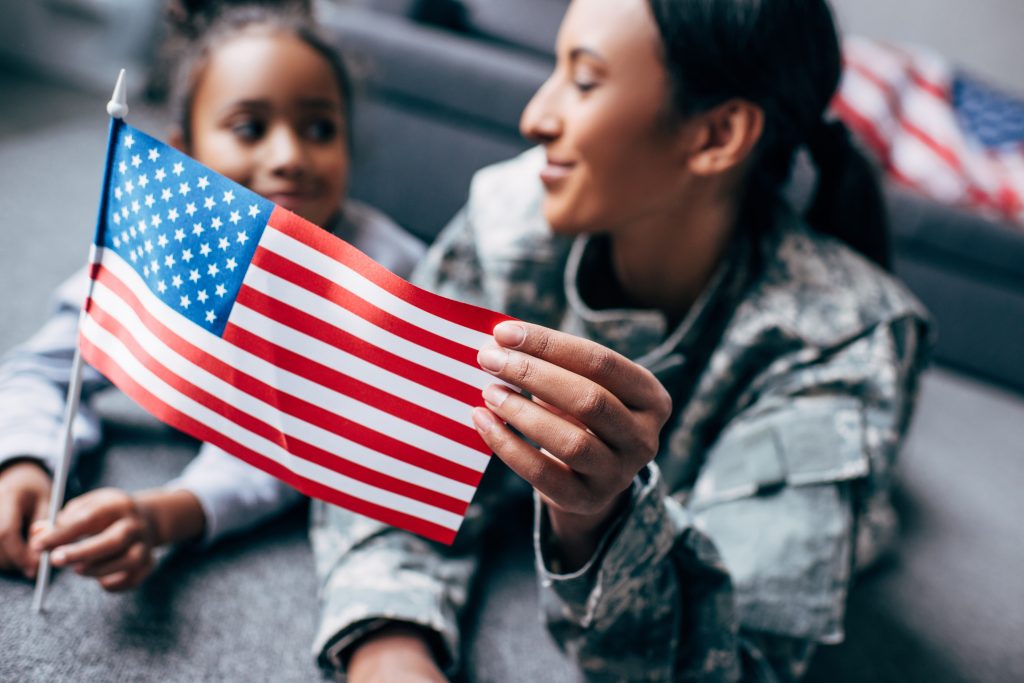By Amy Miller, AFC®

Female Veterans make up around 10% of all Veterans in the U.S. and are considered to be the fastest-growing group seeking benefits, services, and care through the U.S. Department of Veterans Affairs (VA). Despite progress over the past two decades, female Veterans transitioning out of the military still face significant challenges and barriers.
This week, in honor of International Women’s Day, we will focus on a few of the issues female Veterans face and some of the resources available.
Unique Medical & Mental Health Needs
Since 2000, the number of women in combat positions has grown tremendously, resulting in more female Veterans facing new and unique gender-specific medical and mental health challenges. These challenges include chronic pain, military sexual trauma, complications during pregnancy, eating disorders, heightened mental health issues, PTSD, and suicide.
This significant increase in the number of female Veterans seeking care coupled with these gender-specific challenges and needs has elevated the demand on VA Medical Centers to provide them with quality care. Although challenging to address in a system mostly designed for males, the VA is working through the Women’s Veterans Health Care Program to improve services and benefits related to these issues. This program is designed to meet the unique healthcare needs of female Veterans and assist them with enrolling in VA Health care, setting up appointments, and answering eligibility and disability rating questions.
To learn more about Women’s Health services and how to access them, female Veterans can start by visiting the Women Veterans Health Care Center online or by contacting it directly at 855-829-6636. Representatives trained in the specific needs of female Veterans are available to help secure resources and services.
You can also take the Women’s Health Transition Training, watch videos related to women’s veteran healthcare online, or listen to the “She Wears Boots“ podcast that discusses health related topics and resources.
Homelessness
Although housing issues for Veterans have been on the decline since 2010, Veterans are still around 50% more likely than civilians to become homeless. Female Veterans are at an additional 4 times the risk of becoming homeless than their male Veteran counterparts. This is due to unique factors like raising children (sometimes alone), unemployment, underemployment, and dealing with trauma and health issues that can create barriers when it comes to finding and sustaining housing.
According to the VA, more than 199,000 homeless female Veterans were served by their programs in 2022. This equals approximately 14% of the total number of Veterans receiving services. An increasing number of these homeless female Veterans — currently around 40 —, are raising children, making the need for housing assistance and services geared toward women more imperative than ever before.
The VA is working to address the housing needs of female Veterans and their families by partnering with the U.S. Department of Housing and Urban Development in the HUD-VASH program, which provides housing vouchers to homeless Veterans.
Additionally, the VA has created the Supportive Services for Veteran Families (SSVF) program that helps homeless Veterans transition into permanent housing and helps prevent Veterans at risk of becoming homeless from losing their homes. Its programs at each VA Medical Center also help homeless female Veterans connect to needed resources and services.
Unemployment & Underemployment
According to a recent report released by Syracuse University, the unemployment rate for female Veterans increased in January 2023 from 1.7% to 3.9%, which is higher than both male veterans (2.6%) and civilian women (3.4%). This is an increase of 2.2% from December 2022 for female Veterans. In comparison, the civilian women’s unemployment rate increased 0.30% in the same timeframe.
In 2021, the National Defense Authorization Act directed the VA to conduct a study to better understand the reasons post-9/11 female Veterans experience unemployment and underemployment at higher rates than their male counterparts, civilian women, and female Veterans from previous generations. Last year, the VA’s Center for Women Veterans, Office of Women’s Health, and the VA’s Quality Enhancement Research Initiative worked together to understand the causes of this problem and to create solutions.
The study found that transition can be particularly difficult for female Veterans. Although women leaving the military typically have more education, they often fare worse than males during transition. The study attributed their difficulties to factors such as poor health, low self-esteem, housing instability, and lack of childcare and transportation.
Since concluding the study, the VA and the Center for Women Veterans have worked to create programs that can help female Veterans get training and connect to resources. The resources include the Office of Outreach, Transition, and Economic Development, Veteran Readiness & Employment, and free education and career counseling programs.
Assistance
We encourage anyone in need of assistance, anyone that knows of a Veteran in need of assistance or any caregivers of a Veteran needing assistance to reach out to one of the below resources listed below:
Women’s Veteran’s Call Center: 855-VA-WOMEN (855-829-6636)
Veteran’s Crisis Hotline: 988, then press 1
VA Benefits Hotline: 800-827-1000
Caregiver Support Line: 855-260-3274
In addition, the Veterans Benefits Banking Program offers free financial and credit counseling for all Veterans with accredited counselors. For more information and to connect with a counselor visit https://veteransbenefitsbanking.org/financial-counseling/.